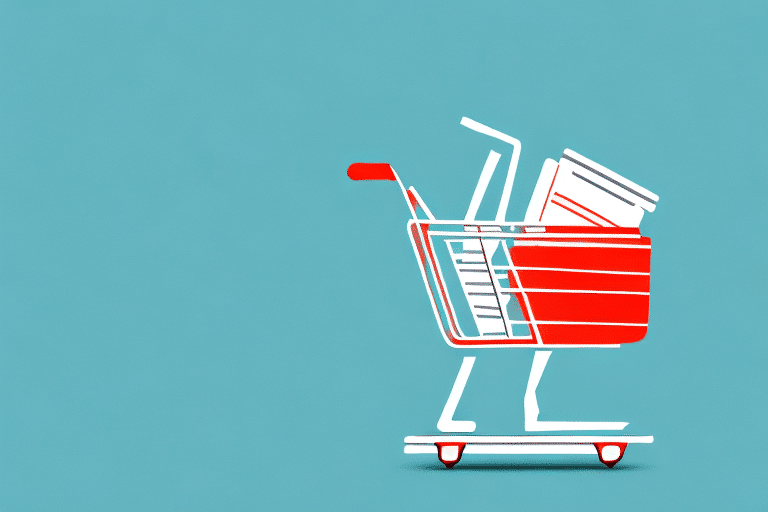How to Reduce Your Shopify Cart Abandonment Rate
As an online retailer, your main goal is to convert website visitors into paying customers. However, one of the biggest challenges faced by e-commerce businesses is the high rate of cart abandonment. A high cart abandonment rate means that visitors are leaving your website without completing a purchase, which can significantly impact your revenue and profitability. In this article, we'll provide you with a detailed guide on how to reduce your Shopify cart abandonment rate and improve your overall conversion rate.
The Importance of Cart Abandonment Rate for Your E-commerce Store
Before diving into strategies to reduce cart abandonment, it's essential to understand why this metric is crucial for your e-commerce store. The average cart abandonment rate across industries is approximately 70%, meaning that three out of four shoppers leave without making a purchase. A high cart abandonment rate can indicate issues with your website's user experience, checkout process, or pricing strategies.
Furthermore, a high cart abandonment rate may suggest that your website isn't effectively communicating the value of your products or services. Customers might hesitate to complete a purchase due to uncertainties about product quality, shipping costs, or return policies. By addressing these concerns, you can build trust with your customers and encourage them to finalize their purchases.
Common Causes of Cart Abandonment and How to Identify Them
Understanding the reasons behind cart abandonment is the first step in addressing the issue. Some common causes include:
- High Shipping Costs: Unexpected shipping fees can deter customers from completing their purchases.
- Complicated Checkout Process: A lengthy or confusing checkout process can frustrate users, leading them to abandon their carts.
- Lack of Trust: If your website lacks trust signals, customers may hesitate to enter their payment information.
- Inadequate Payment Options: Limited payment methods can restrict customers from completing transactions.
- Website Performance Issues: Slow loading times or technical glitches can disrupt the shopping experience.
To identify the specific causes affecting your store, utilize analytics tools like Google Analytics to track user behavior and pinpoint where customers are dropping off in the checkout process.
The Role of User Experience in Cart Abandonment
A seamless user experience (UX) is vital in reducing cart abandonment rates. Your website should be intuitive, responsive, and user-friendly. Key aspects of UX that influence cart abandonment include:
- Navigation: Ensure that your website is easy to navigate, allowing customers to find products effortlessly.
- Product Descriptions: Clear and detailed product descriptions help customers make informed decisions.
- Mobile Optimization: With a significant portion of traffic coming from mobile devices, optimizing your site for mobile is essential.
- Checkout Process: A simplified checkout process with minimal steps can enhance the user experience.
Improving these elements can lead to a more engaging shopping experience, encouraging customers to complete their purchases.
Strategies to Improve Your Shopify Store's User Experience
Implementing effective strategies to enhance your website's user experience can significantly reduce cart abandonment rates. Consider the following approaches:
- Optimize Website Speed: Use tools like Google PageSpeed Insights to analyze and improve your site's loading times.
- Simplify Checkout Process: Reduce the number of steps and form fields required to complete a purchase. Offer a guest checkout option to minimize barriers.
- Transparent Shipping Costs: Display shipping fees early in the shopping process to avoid surprises at checkout.
- Showcase Trust Signals: Incorporate security badges, customer reviews, and testimonials to build trust with potential buyers.
- Responsive Design: Ensure your website is fully responsive and functions seamlessly across all devices.
Streamlining Your Checkout Process to Reduce Cart Abandonment
A streamlined checkout process is crucial for minimizing cart abandonment. Here are some effective tips:
- Eliminate Unnecessary Steps: Remove any non-essential steps or fields that may extend the checkout process.
- Use Progress Indicators: Show customers their progress through the checkout stages to reduce uncertainty.
- Enable Guest Checkout: Allow customers to make purchases without creating an account to expedite the process.
- Clear Calls to Action: Use prominent and descriptive buttons like "Proceed to Checkout" or "Complete Purchase."
- Provide Order Summaries: Offer a clear summary of the order, including items, prices, shipping costs, and taxes before the final confirmation.
Offering Multiple Payment Options
Providing a variety of payment methods can cater to different customer preferences, thereby reducing cart abandonment. Common payment options include:
- Credit and Debit Cards
- Digital Wallets (e.g., PayPal, Apple Pay, Google Pay)
- Buy Now, Pay Later Services (e.g., Klarna, Afterpay)
- Bank Transfers
- Cryptocurrencies
Offering diverse payment options not only enhances user convenience but also builds trust, making customers more likely to complete their purchases.
Utilizing Email Marketing for Cart Recovery
Email marketing is a powerful tool for recovering lost sales from abandoned carts. By sending follow-up emails, you can remind customers of the items they left behind and encourage them to return. Effective cart recovery emails should include:
- Personalization: Address customers by name and include images of the abandoned products.
- Sense of Urgency: Incorporate time-sensitive offers or limited discounts to motivate immediate action.
- Clear Calls to Action: Use buttons like "Return to Cart" or "Complete Your Purchase" to guide customers back to their carts.
- Customer Support Information: Provide contact details for any inquiries or assistance needed.
Best Practices for Cart Recovery Emails
- Timely Follow-Up: Send recovery emails within 24 hours of cart abandonment for maximum effectiveness.
- Compelling Subject Lines: Craft clear and engaging subject lines that prompt customers to open the email.
- Visually Appealing Design: Use attractive layouts and high-quality images to capture attention.
- Testing: A/B test different email elements to determine what resonates best with your audience.
Implementing Exit-Intent Popups
Exit-intent popups are strategic tools that appear when a user is about to leave your website, offering incentives to stay or complete a purchase. Benefits of using exit-intent popups include:
- Reducing Bounce Rates: Capture the attention of users who are about to leave, keeping them engaged with your store.
- Boosting Conversion Rates: Offer discounts or free shipping to encourage completion of the purchase.
- Gathering Email Leads: Collect email addresses for future marketing efforts.
Tips for Effective Exit-Intent Popups
- Clear Messaging: Use straightforward headlines like "Don't Miss Out on Your Items!" to grab attention.
- Incentivize Action: Offer tangible incentives such as discounts, free shipping, or exclusive offers.
- Minimal Design: Keep the design clean and focused, avoiding clutter that can distract from the main message.
- Easy Exit: Ensure that users can easily close the popup if they choose not to engage, maintaining a positive user experience.
Leveraging Retargeting Ads for Cart Recovery
Retargeting ads serve as reminders to customers who have abandoned their carts, encouraging them to return and complete their purchases. Effective retargeting strategies include:
- Targeted Audience: Focus on users who have shown intent by adding items to their carts but haven't purchased.
- Compelling Ad Copy: Use clear and persuasive language with strong calls to action.
- High-Quality Images: Showcase the exact products left in the cart to reconnect with the customer's intent.
- Creating Urgency: Incorporate limited-time offers or discounts to prompt immediate action.
- Continuous Optimization: Regularly test and refine your ads based on performance data to enhance effectiveness.
Best Practices for Retargeting Ads
- Frequency Capping: Limit the number of times an ad is shown to avoid overwhelming potential customers.
- Diverse Ad Formats: Experiment with various ad formats like display ads, social media ads, and video ads to see what resonates best.
- Performance Tracking: Use analytics tools to monitor ad performance and make data-driven adjustments.
The Importance of A/B Testing and Analytics
Continuous improvement is key to reducing cart abandonment rates. Implementing A/B testing and leveraging analytics allows you to understand what strategies work best for your audience. Here's how:
- A/B Testing: Experiment with different versions of your website elements, such as headlines, button colors, and layouts, to determine which variations yield higher conversion rates.
- Analytics: Utilize tools like Google Analytics to gain insights into customer behavior, identify drop-off points, and measure the effectiveness of your strategies.
By systematically testing and analyzing your approaches, you can make informed decisions that enhance the shopping experience and reduce cart abandonment.
Essential Tools and Apps to Reduce Cart Abandonment
Leveraging the right tools and apps can streamline the process of reducing cart abandonment rates on your Shopify store. Here are some highly recommended options:
- Shopify Abandoned Cart Recovery: Shopify's built-in feature automatically sends recovery emails to customers who have left items in their carts.
- Urgency & Countdown Timer by Hurrify: Adds urgency elements to your store, encouraging customers to complete their purchases quickly.
- Privy: An all-in-one marketing platform that offers popups, banners, and email marketing to capture leads and recover abandoned carts.
- Mailchimp for Shopify: Integrates directly with Shopify to manage email campaigns and automate cart recovery emails.
- RetargetApp: Facilitates the creation and management of retargeting ads to bring back abandoned cart shoppers.
Implementing these tools can provide automated solutions to identify and address cart abandonment, improving your store's conversion rates effectively.
Conclusion
Reducing cart abandonment rate is an ongoing process that requires a combination of strategic planning, continuous testing, and implementation of best practices. By enhancing your website's user experience, streamlining the checkout process, offering multiple payment options, and leveraging email and retargeting strategies, you can significantly lower your cart abandonment rates and boost your Shopify store's profitability.
Stay proactive in analyzing customer behavior and adapting to their needs to maintain a competitive edge in the e-commerce landscape.




















